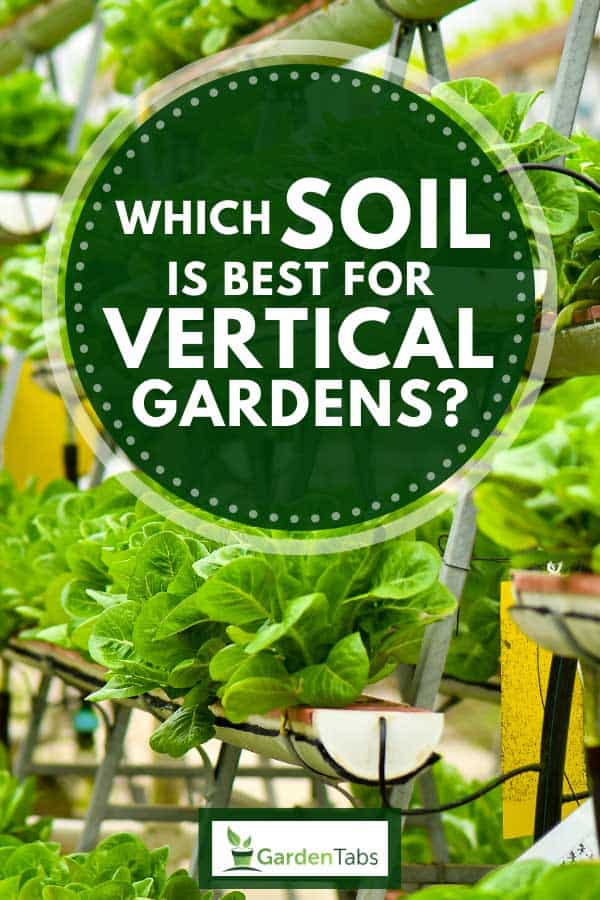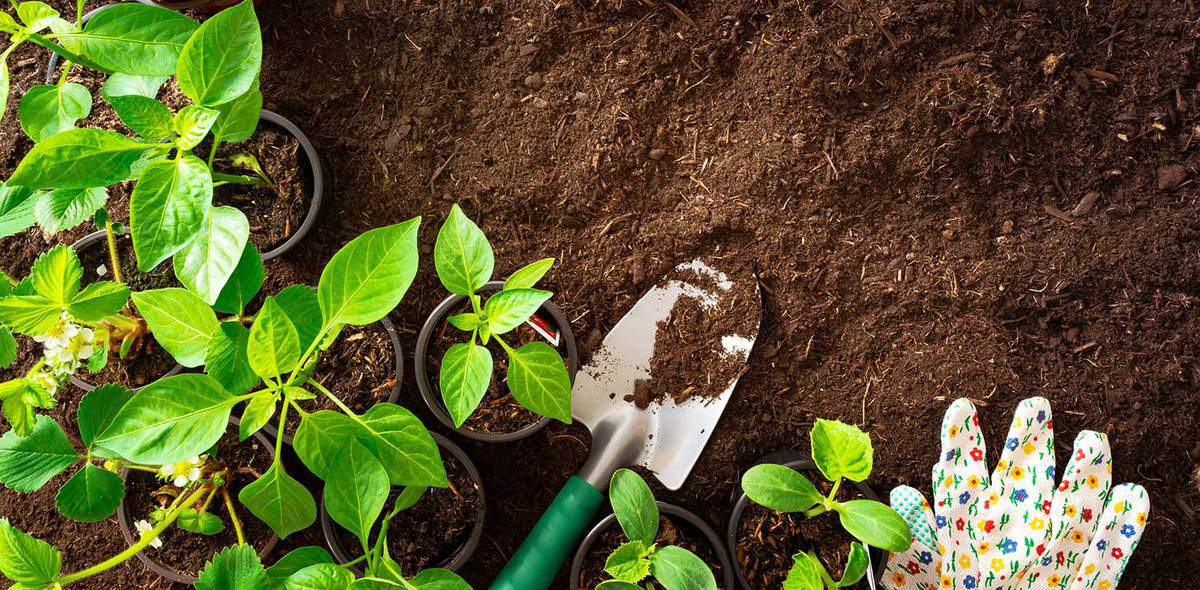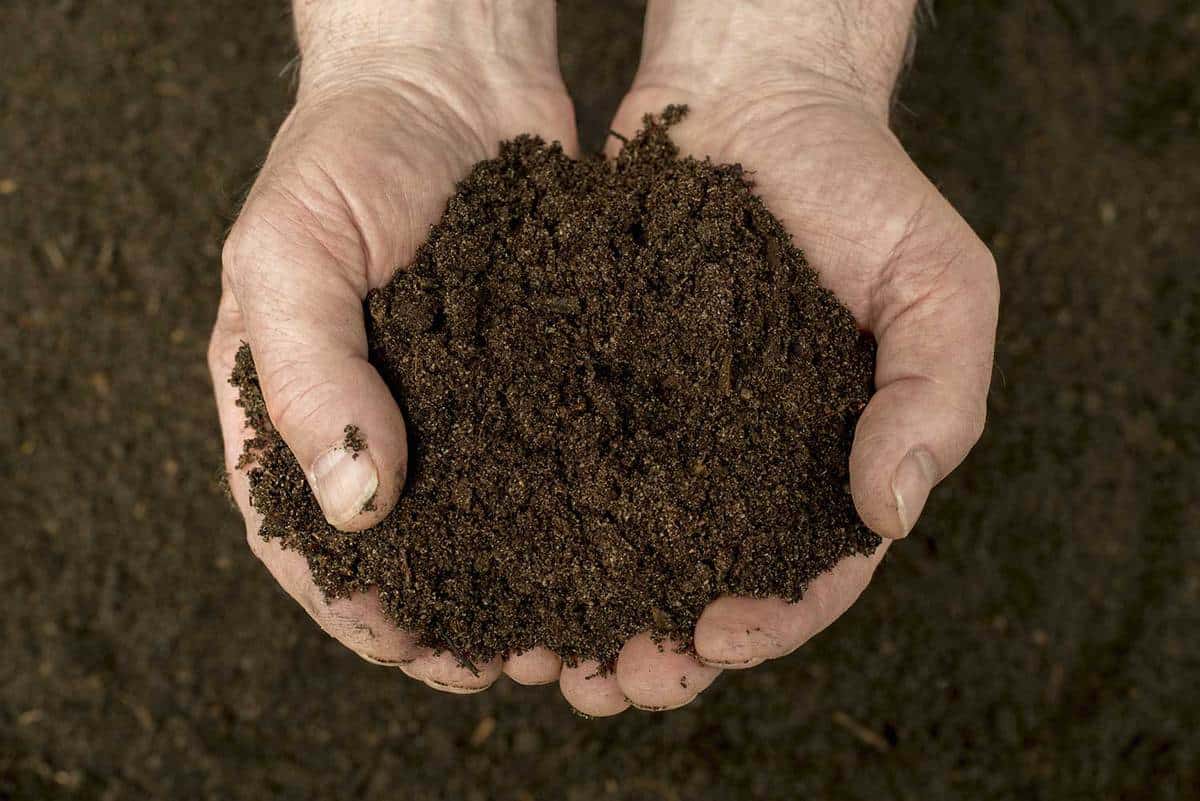 Among the many choices involved in setting up a gorgeous vertical garden, there's the one of soil. The soil is the where your plants live, so you need to make sure they get the best possible home where they can grow and flourish. At which point you may be wondering what type of soil is best for your vertical garden. Good question. Let me answer that based on my knowledge and years of experience.
Among the many choices involved in setting up a gorgeous vertical garden, there's the one of soil. The soil is the where your plants live, so you need to make sure they get the best possible home where they can grow and flourish. At which point you may be wondering what type of soil is best for your vertical garden. Good question. Let me answer that based on my knowledge and years of experience.
The best soil for any vertical garden is good-quality commercial potting soil that's based on loamy soils, mixed with other elements. If you wish to prepare a similar soil at home, the recipe contains equal parts of peat moss or very matured compost, garden loam or topsoil and clean builder's sand.
Keep reading though. I'm going to explain here why the type of soil matters, what properties the soil should have and why simply taking some dirt from your backyard won't do.
Getting High-Quality Soil For A Vertical Garden Isn't too complicated
The soil is the very bottom line in any gardening project.
Aside from water, nothing is more important for producing healthy plants. The good news is that it's not too hard to maximize soil conditions in a vertical garden. Modern technology gives us a terrific range of options and control over what goes inside the planting containers and pockets of our vertical gardens.
Since soil is so fundamental to a successful vertical garden, the good news is that the ingredients we seek are readily available at so many outlets.
In the end, by following certain simple guidelines, giving our plants a perfect growing medium is among the easier tasks a gardener will find. As I'll explain in this post, there are in fact few variations in soil types, where vertical gardening is concerned.
In other words, you should have no problem brewing up a terrific plant medium!
Why Soil Matters For Planting

From the very first day, a seed or young slip is inserted into the ground, the soil in and around it form protection and a cozy place to develop.
As the seed bursts, it immediately becomes a "feeder". No longer protected by its pod, it sends out its tentative underground tendrils - roots - to begin taking in the nutrients it needs.
These small plants tend to develop quickly once they pop. The medium - the soil - that surrounds the newest plants needs to be welcoming - soft and penetrable so that the roots can begin to range.
Roots have several roles. They're not there merely to eat and transmit goodies, but also to supply support and structure to hold the plant up in all conditions. Understanding this gives us a better idea of how soil functions in plant maturity.
Soil Qualities
Garden soil - more commonly referred to as native soil - is often successful because it's naturally mixed with things a plant needs in order to thrive. This provides a fine basis for outdoor plants which thrive in that natural - and local - environment.
Which begs the question:
Can I just get soil from my backyard and put it in my vertical garden's containers?
As we will see, the answer is a qualified "yes". Dirt from your backyard can be added to vertical garden soils but with a few strong caveats.
The soil must match the plants
The outdoor plants in our yards are specifically engineered to handle pretty much whatever Nature decides to hand them.
The requirements for indoor plants - including vertical garden plants - are different. These delicate plants require a more controlled environment.
What does that mean in terms of soil?
Almost always, garden soil on its own doesn’t offer enough air, water, or nutrients for a plant growing in a container. This is where you need potting soil. They are specifically formulated to overcome these limitations.
What's so special about potting soil?
The primary characteristic of potting soils is their ability to drain well.
Without good drainage, the constant pooling and collection of water at the base of any plants will be disastrous. That's why containers for vertical garden plantings require a draining pouch or some other way which allows the water to escape.
Drainage isn't just about the water either. It allows oxygen - air - to play a role, by filling up the spaces the water left behind and allowing room for roots to grow and even collect more oxygen for the plant.
Garden soils also tend to be substantially heavier than potting soils. This is potentially disastrous in vertical gardens, which could collapse, sag or separate from moorings from excessive weight.
Mineral Ingredients For Better Soil
Here's the secret for great potting soil: It has added minerals in it.
The prime ones are usually vermiculite, perlite, sand and even bentonite (aka kitty litter!) These are the most common minerals that provide lightweight arability.
Vermiculite and perlite are volcanic materials which do not decompose over time and which can actually provide small additional amounts of potassium and magnesium. Sand can also be added to potting soil mixtures, as an amendment that facilitates better drainage and can provide minerals on its own.
All of the minerals mentioned here are lightweight, compared to the heavier soil you'll find in your backyard. For vertical gardening, that's crucial for the reasons mentioned above.
Soil Types In General
In case you're a beginner, let me take a break here for a quick summary of types of soil used for any type of gardening - vertical included. It pays to know a few terms and definitions concerning soils - just so that you'll see where your choice of soil fits in within a bigger picture.
In general, there are 6 major categories of soils:
- Clay
- Sand
- Silt
- Peaty
- Chalky
- Loamy
Rather than bog down in specifics about these major categories, let's take a more general view of the things that are actually important to know.
- Clay soils are very dense. When they dry they become rock hard and virtually impenetrable for planting purposes. This type of soil drains poorly and is really difficult to work with. Since clay soil is also very heavy, it's a bad choice for any kind of hanging containers.
- Sandy soils drain quickly, warms up quickly in Spring, easy to cultivate but dries out incredibly quickly. It also allows rapid passing of nutrients which wash through all too quickly. It can work ok for some plants, but not for all.
- Silty soils are smooth and creamy to the touch, retain nutrients and moisture as well. It is seriously easier to cultivate than clay soils but it can compact to some serious density when dry. Not perfect, but generally an excellent soil to augment and work with.
- Peaty soils are loaded with organic materials but their acid level actually inhibits decomposition. It is dark in color and amazingly efficient at retaining water. In the end - augmented by lime and fertilizers - it can be a terrific medium for plants.
- Chalky soils are immensely Alkaline with Ph values of 7.5 or more. While they drain well enough, they can also become too hard and stony when dry. With corrective fertilizers and some organic material, because it drains well, it could be a good planting medium.
- Loamy soils are the winners of the soils jackpot! The loamy soil has every ideal characteristic, rich in nutrients, drains well, retains water, and easy to cultivate. Pretty much the ideal soil.
Bear in mind, of course, that every natural soil in the world contains varying degrees of these categories. In other words, you'll rarely find pure chalk soil in your backyard or pure clay. Whatever you see there is likely to be a mixture of some sort, with one type of soil being more dominant.
What Are The Best Ingredients For Vertical Garden Soil?

A soil medium must have a method of draining water but at the same time, it also needs a way of retaining some of the moisture.
This seeming contradiction is where organic materials come into play.
Peat Moss, Sphagnum moss, sawdust, leaf molds or even some shredded barks or compost can provide this. These all retain moisture. Not only that, but they also break down over a longer time than the commercial fertilizers you're likely to be using in your garden.
That means they are a steady and slow form of fertilizing in their own right. They help develop the bacteriological processes which are also fundamental to healthy plant growth.
The most commonly used organic materials are ones mentioned - peat and sphagnum mosses, compost, leaf mold, and even sawdust. Native soils in our yards may even contain elements of these organic materials if they are areas which have been worked over.
What About Using Native Soil to Save Money?
"Native Soil" is that soil which your home rests on and occupies the outdoor land.
It is attractive as a "Cost-free" product, of course. Native soil can also add "free" bulk and stabilize the Ph levels of soils, but you must be careful and not include heavy, dense clay elements.
Not only will clay soil expand but it will also retain moisture too long for healthy container plants. As clay soils dry, they tend to contract, harden and squeeze off root feeding. They are also just plain heavy.
Bear in mind, a well-worked home or community garden, worked over and amended already for a period of time, could have great soil. The additives and amendments, including compost, build up the biodiversity of the soil, creating helpful bacteria. This soil would be lighter than the straight stuff right under the lawn.
So, to sum this up: 100% natural native soil isn't a good idea for your vertical garden. However, garden soil that has been cultivated for years could very well be a good money-saving solution.
Formulas For Successful Soil
The primary ingredient of any gardening project, and perhaps even more in vertical gardens, is the attention paid by its owner.
Heeding good gardening advice is always a good idea because so many intelligent gardeners have worked these things out over a long, long period of time.
In terms of soil, it's a question of balance.
The bottom line is to produce a soil which is lightweight enough to keep from overloading the containers, but heavy enough to provide a good medium for structural considerations. It needs to hold water but also drain. It needs to allow roots to grow and use up the available nutrients.
A homemade planting soil formula
A perfect example is an old standby formula:
- One part peat moss or very matured compost
- One part garden loam or topsoil (most often purchased at garden centers)
- One part clean builder's sand or the vermiculite/perlite/litter suggestions.
The organic material in the above mix provides structure. The sand/mineral mix will improve drainage. A balanced, slow-release organic fertilizer may also be added to the mix and will be continually used.
Choosing and buying the right soil
The other option is simply to purchase already-mixed, bagged potting soil.
Bear in mind, there is quite a wide range of bagged soils available, so make sure and check the contents as described on the bags. It is very important to know what you are getting. In the end "Organic soils" are best.
Here are a few examples (links lead to Amazon who will gladly deliver these to your doorstep) -
Premium Potting Mix by Burpee Natural Organic
Professional Potting Soil by Carolina Biological Supply Company
These are all great soil choices for your vertical garden!
In Summary
Choosing the soils for a vertical garden can end up being rather simple.
The end product will always and forever be determined by the diligence and care of the gardener who developed the project. And what a gorgeous product it can be!!



